- Home
- Keboola Overview
- Getting Started Tutorial
-
Components
-
Data Source Connectors
- Communication
- Databases
- ERP
-
Marketing/Sales
- Adform DSP Reports
- Babelforce
- BigCommerce
- ChartMogul
- Criteo
- Customer IO
- Facebook Ads
- GoodData Reports
- Google Ads
- Google Ad Manager
- Google Analytics (UA, GA4)
- Google Campaign Manager 360
- Google Display & Video 360
- Google My Business
- Linkedin Pages
- Mailchimp
- Market Vision
- Microsoft Advertising (Bing Ads)
- Pinterest Ads
- Pipedrive
- Salesforce
- Shoptet
- Sklik
- TikTok Ads
- Zoho
- Social
- Storage
-
Other
- Airtable
- AWS Cost Usage Reports
- Azure Cost Management
- Ceps
- Dark Sky (Weather)
- DynamoDB Streams
- ECB Currency Rates
- Generic Extractor
- Geocoding Augmentation
- GitHub
- Google Search Console
- Okta
- HiBob
- Mapbox
- Papertrail
- Pingdom
- ServiceNow
- Stripe
- Telemetry Data
- Time Doctor 2
- Weather API
- What3words Augmentation
- YourPass
- Data Destination Connectors
- Applications
- Data Apps
- Development Branches
- IP Addresses
-
Data Source Connectors
-
Templates
- Advertising Platforms
- AI SMS Campaign
- Customer Relationship Management
- DataHub
- Data Quality
- eCommerce
- eCommerce KPI Dashboard
- Google Analytics 4
- Interactive Keboola Sheets
- Kai SQL Bot
- Mailchimp
- Media Cashflow
- Project Management
- Repository
- Snowflake Security Checkup
- Social Media Engagement
- Surveys
- UA and GA4 Comparison
- Data Catalog
- Storage
- Flows
- Orchestrations
- Transformations
- Management
- AI Features
- Home
- Getting Started Tutorial
- Part 3: Writing Data
Part 3: Writing Data
This section of our tutorial will walk you through the process of writing data from Keboola to a destination. This step is commonly referred to as reverse ETL.
Having already learned how to manipulate data in Keboola using SQL, you now have a denormalized table called opportunity_denorm
ready in Storage.
In this tutorial, we will push this table to a Google Sheets destination. It’s important to note that other typical destinations can include BI tools, databases, or even applications/APIs, such as CRM systems, and more.
-
Navigate to Components, click the Add Component button and use the search bar to find Sheets.
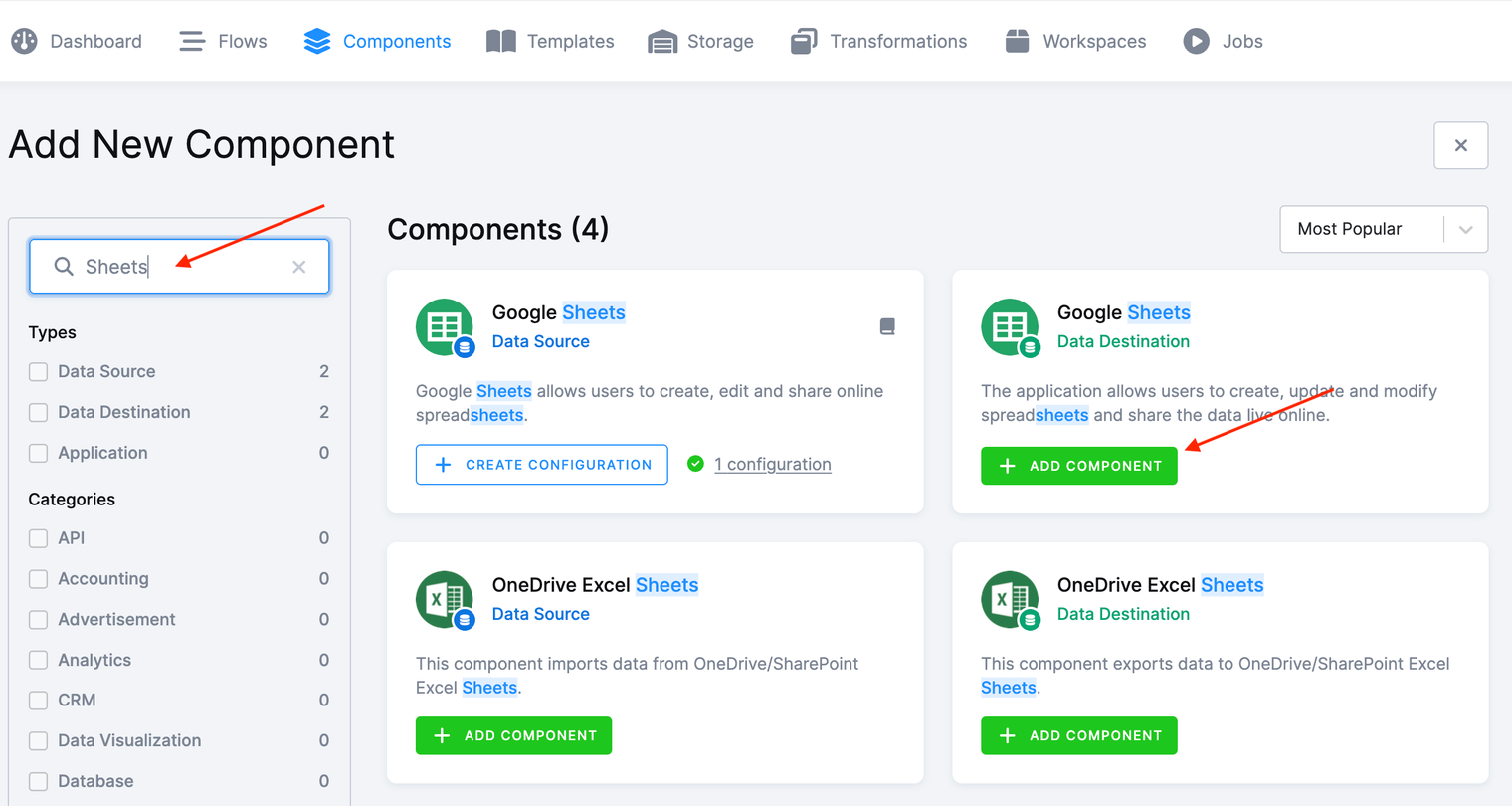
-
Click Add Component and then click Connect To My Data.

-
Enter a Name and Description and click Create Configuration.
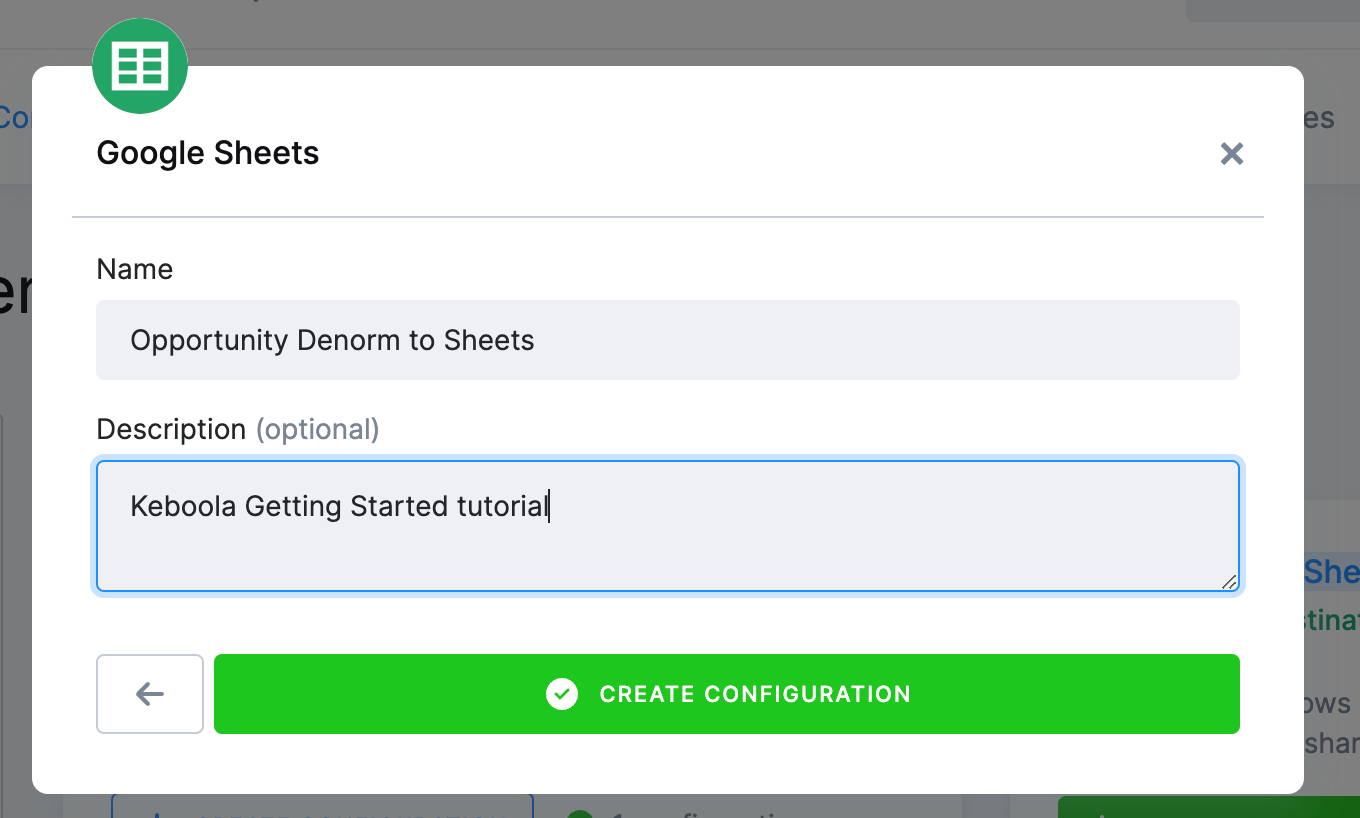
-
Now, we need to authorize the Google account to which we want to write the data. This process is similar to what we’ve done in the Loading data from Google Sheets data source step of this tutorial.
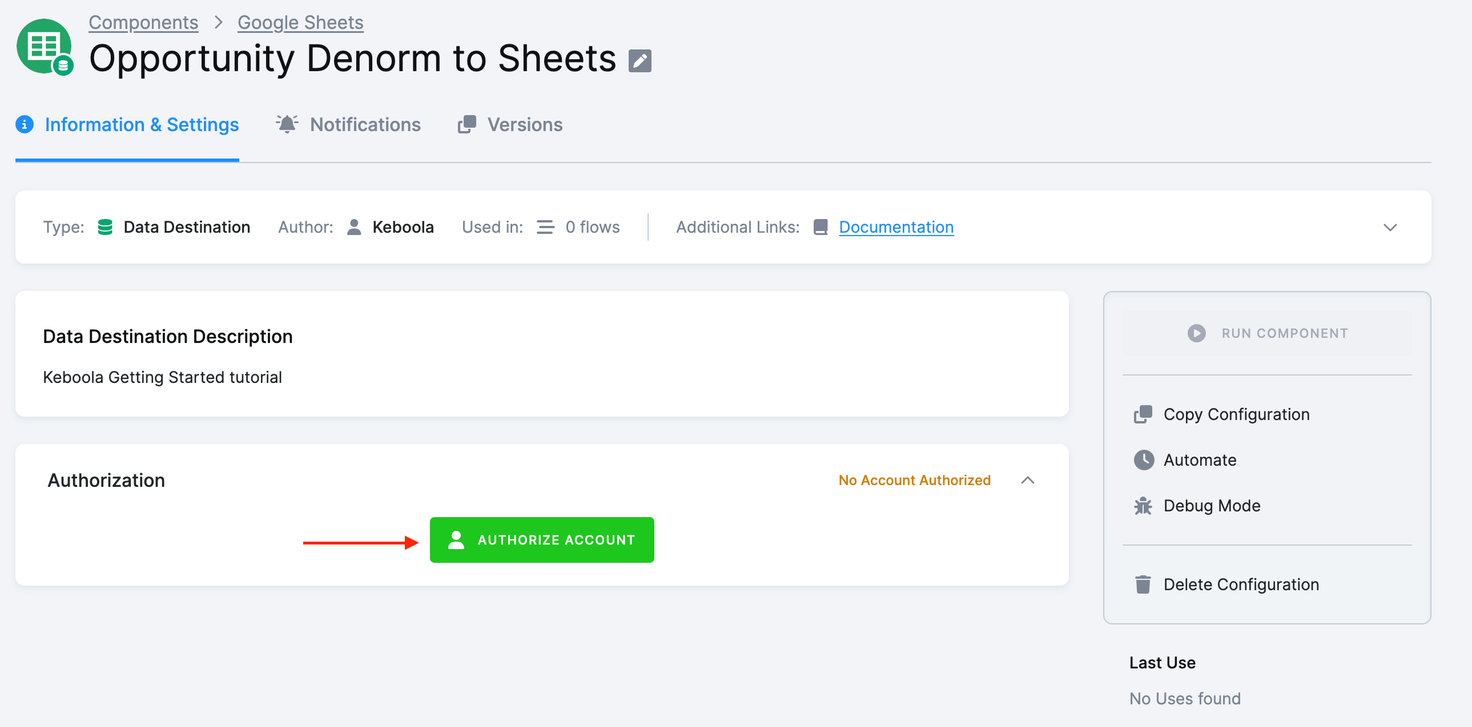
-
Enter a name for your connection and click Sign in with Google. You can also utilize external authorization if you need your colleagues to authorize their accounts. Please note that this authorization will only allow you to write data into a Google Spreadsheet.

-
Click Allow.
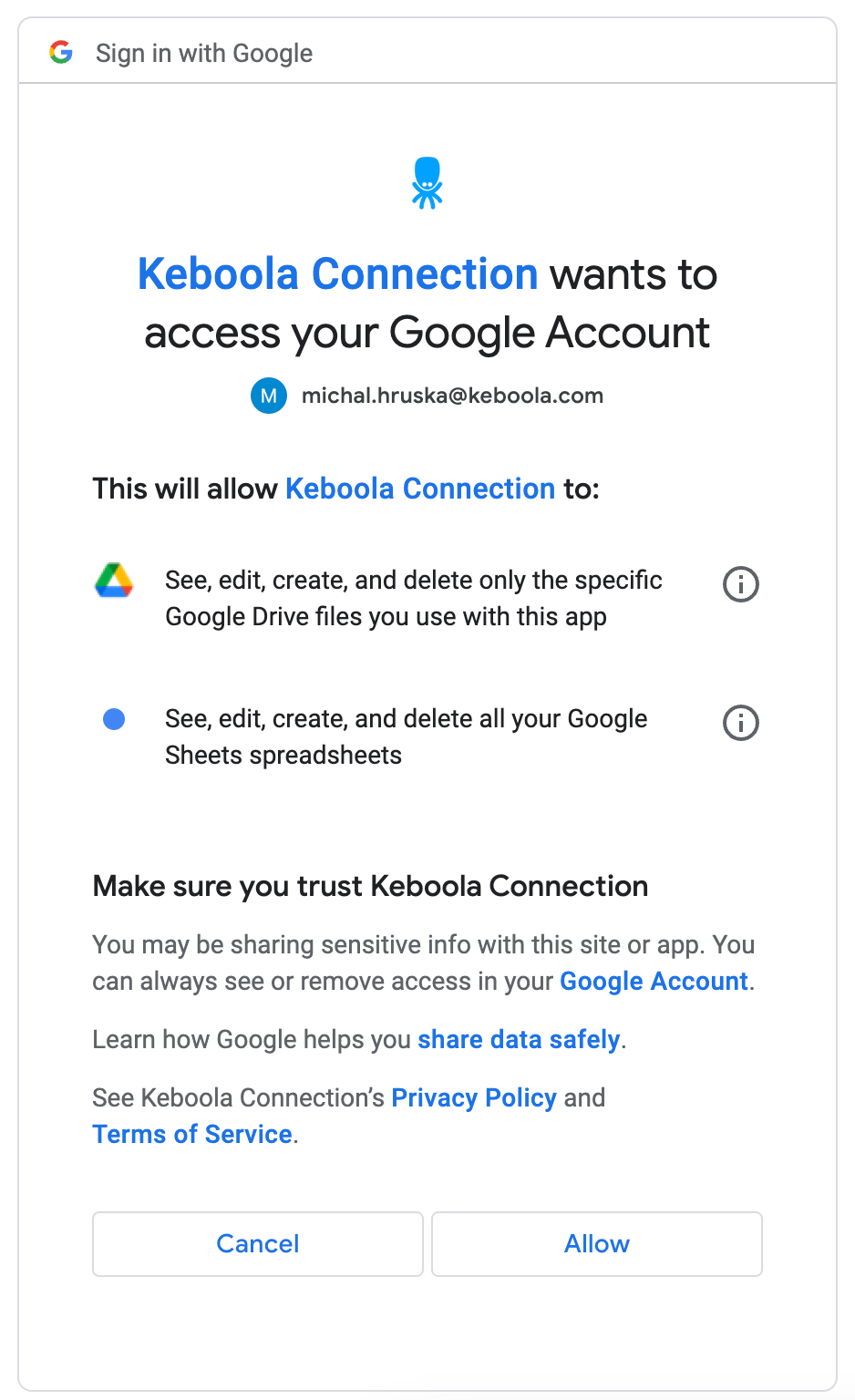
-
Click New Table now to select the
opportunity_denormtable from your Storage.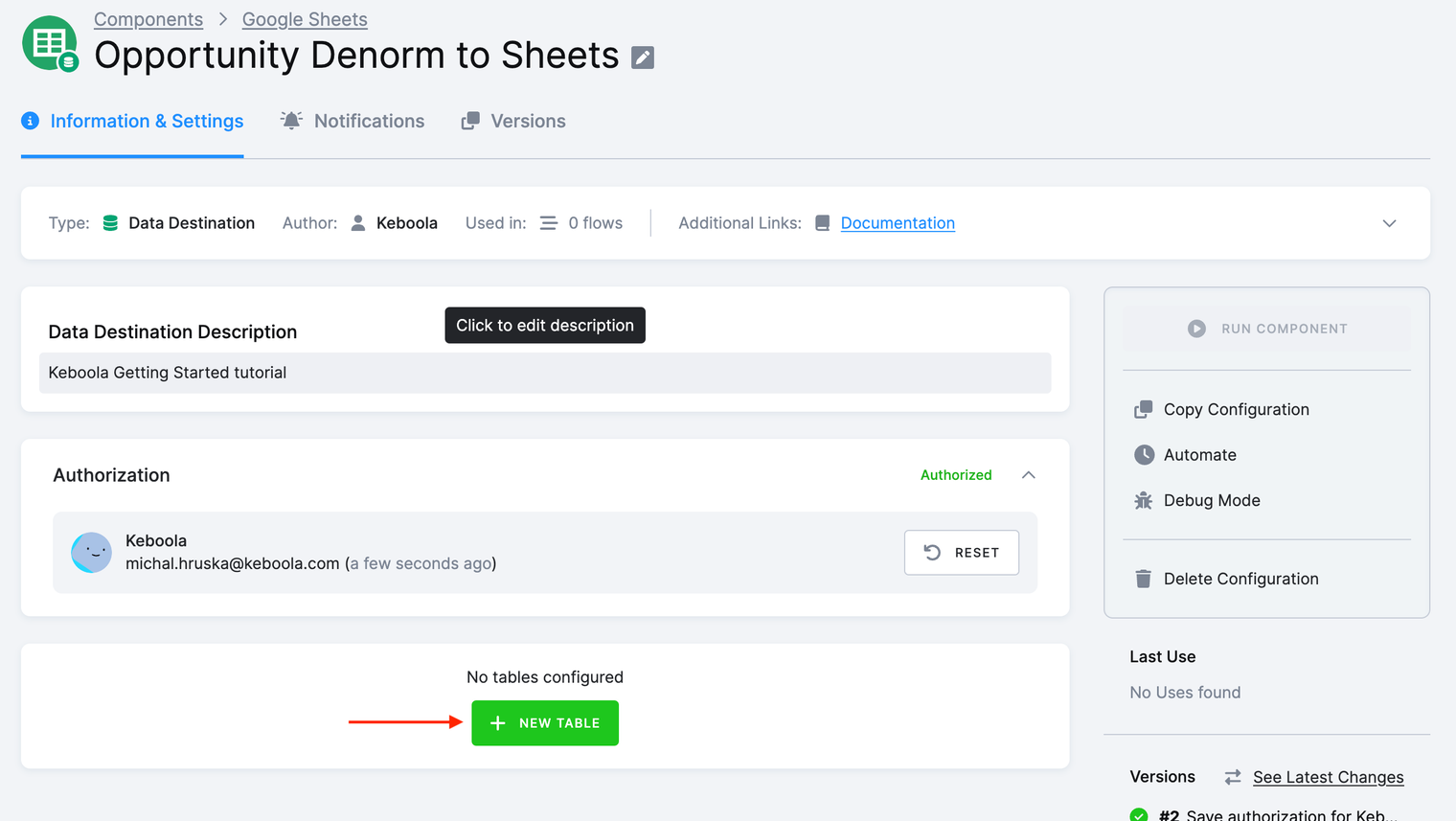
-
Select the table and click Next.
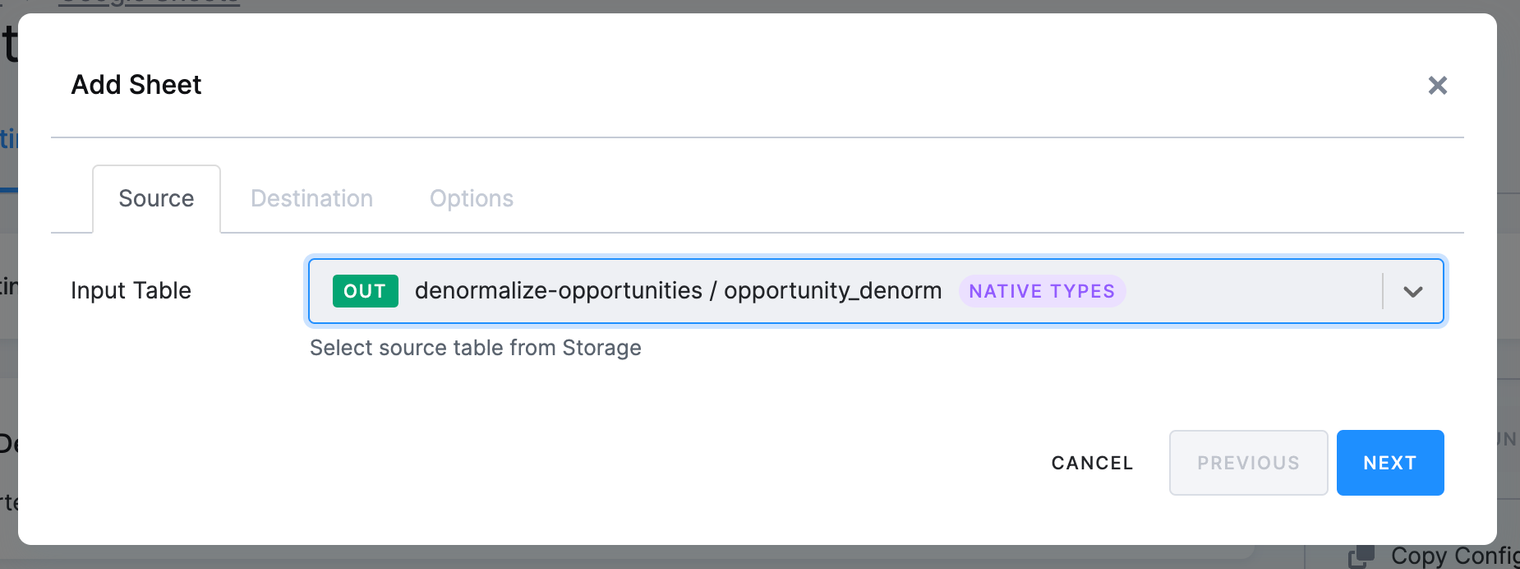
-
You can either create a new spreadsheet or load data to an existing spreadsheet. Click New spreadsheet now and then click Next.
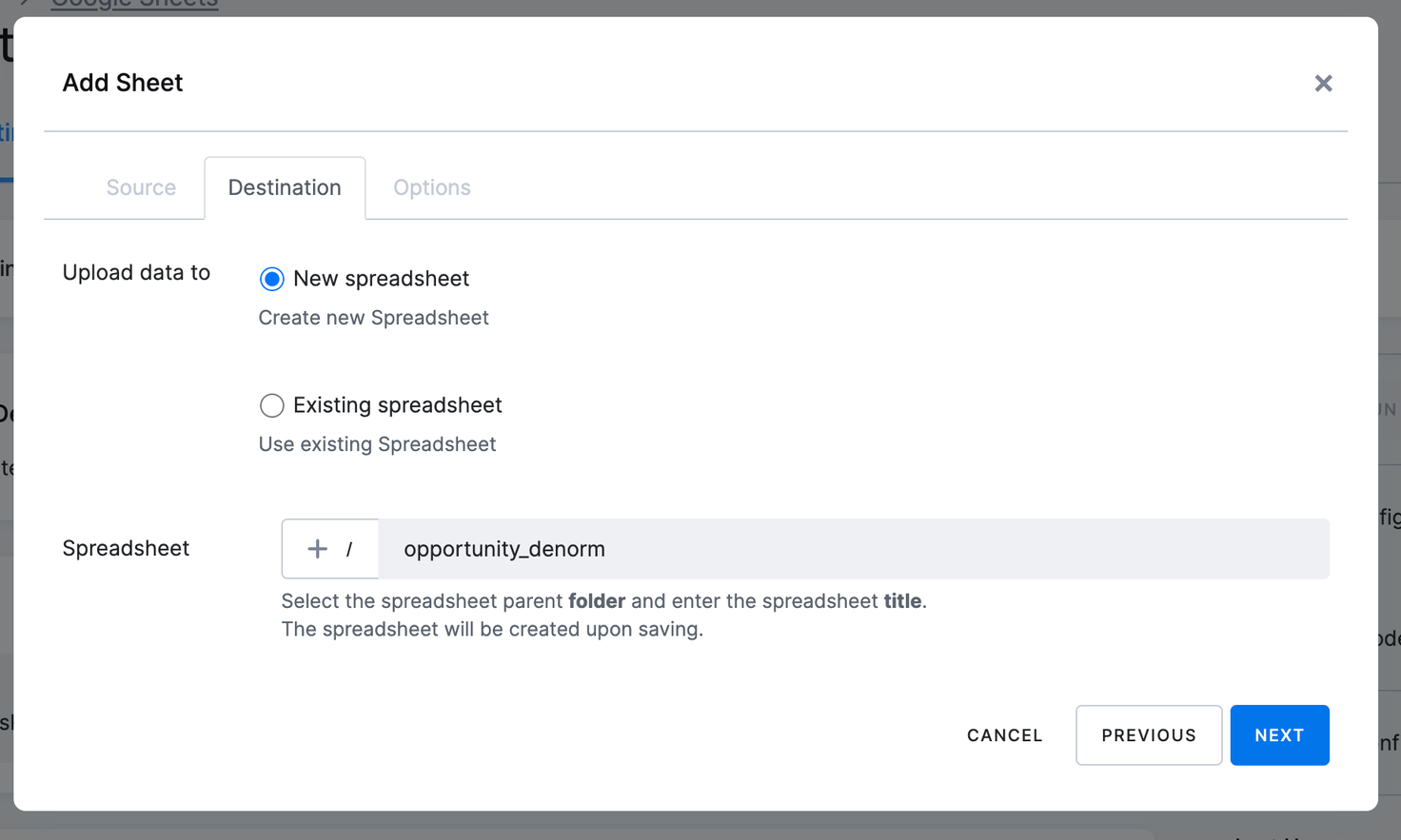
-
Enter a name of your sheet, select Update rows and click Save Sheet. This will create a new empty spreadsheet under the authorized account.
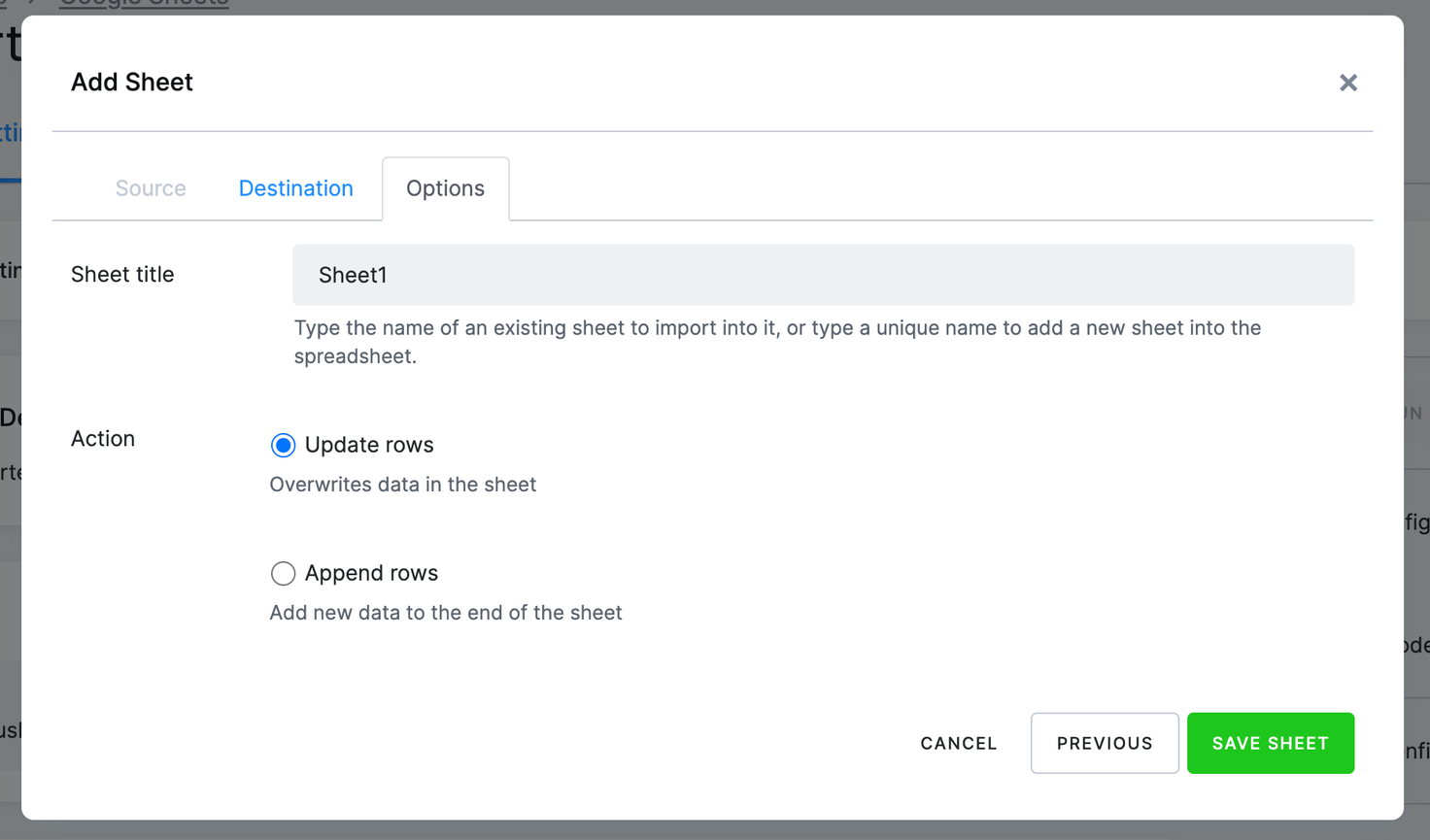
-
To load the data into the created spreadsheet, click the Run Component button.
-
After the job is executed, you can click the spreadsheet name to open the Google Drive spreadsheet (assuming you have access to the spreadsheet).
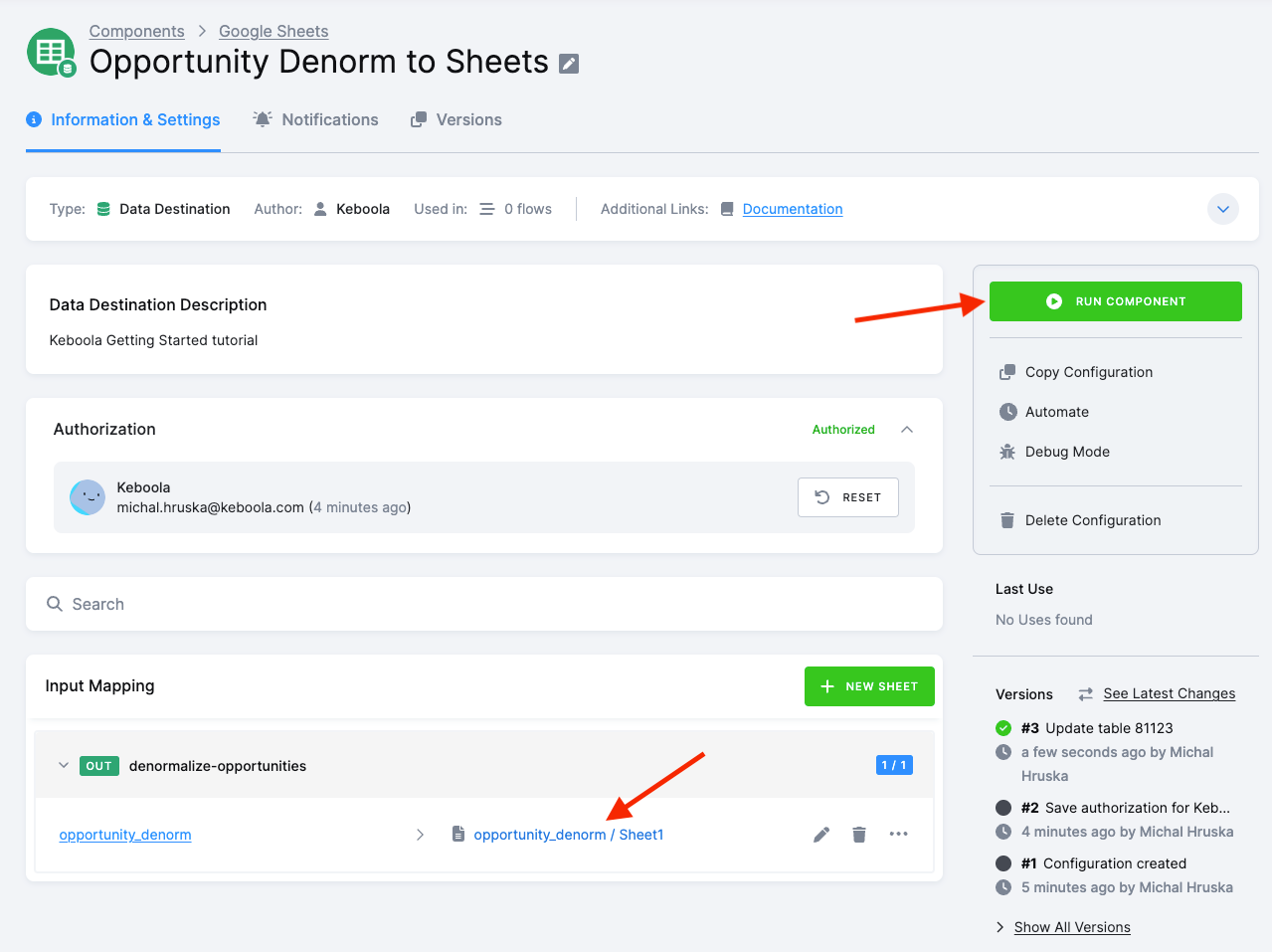
What’s Next
Proceed to Flow Automation for the next step in the tutorial.
If You Need Help
Feel free to reach out to our support team if there’s anything we can help with.
© 2025 Keboola
